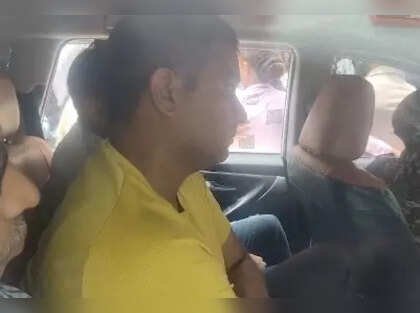The Chhattisgarh Liquor Scam: A Deep Dive into the ED Chargesheet and Its Wider Implications
In a saga that has gripped the attention of political analysts and the public alike, the Chhattisgarh liquor scam and ED chargesheet have unveiled a web of corruption that extends far beyond the borders of this central Indian state. Under the scrutiny of the Enforcement Directorate, the case has raised questions about governance, accountability, and the murky intersections of politics and crime. It started as a routine investigation into the state’s liquor distribution but soon spiraled into a stunning revelation of alleged financial misappropriation involving various stakeholders, including prominent political figures.
The narrative surrounding the Chhattisgarh liquor scam began gaining traction in late 2021. Reports emerged of irregularities in the allotment of liquor licenses, which many believed had turned into a lucrative opportunity for a select group of individuals. As the investigation unfolded, officials discovered a complex network of transactions designed to siphon off government revenue, which was purportedly intended to support state welfare programs. The scam not only raised eyebrows within political circles but also stirred public outrage, as citizens were left wondering how their resources were being mismanaged.
When the ED filed its chargesheet, the report read like a gripping novel filled with intrigue, betrayal, and high-stakes drama. The document detailed how officials allegedly orchestrated a scheme that allowed private players to dominate the liquor market, all while lining their pockets with a share of the profits. Multiple testimonies from various involved parties painted a disturbing picture of collusion and deceit, indicating that the illicit operation was not isolated but rather an orchestrated effort to undermine the public good.
The chargesheet identified key figures, including bureaucrats and politicians, who allegedly played pivotal roles in this scandal. It claimed that these individuals manipulated regulations, turning legal loopholes into opportunities for financial gain. Eyewitness accounts included disturbing revelations of cash transactions and favor exchanges, which seemed to further entrench this systemic corruption. With each layer of the investigation peeled back, the stakes grew higher, revealing a culture of impunity that seemed to pervade the state’s governance model.
As the ED took center stage in this unfolding drama, the political ramifications of the Chhattisgarh liquor scam became increasingly pronounced. Opposition parties seized upon the allegations, questioning the integrity of the ruling administration. Protests erupted across the state, with citizens demanding accountability and transparency. The tension between the government and the opposition reached a boiling point, with each side trading accusations and counter-accusations, making it clear that the repercussions of this scandal would resonate far beyond the courtroom.
Amidst the chaos, the investigation also served as a grim reminder of the challenges posed by corruption in Indian politics. As the ED continued to unveil layers of deceit, citizens wondered whether justice would truly be served. Would those implicated in this massive scheme face the consequences of their actions? Or would the powerful find ways to evade repercussions, once again demonstrating the inadequacies of the system designed to protect the public?

Public sentiment has been a litmus test of the unfolding scandal. Many residents of Chhattisgarh expressed their disillusionment, feeling trapped in a system that seemed to prioritize profit over people. The liquor scam, they argue, is not just about financial irregularities but reflects a broader malaise affecting governance, where the interests of a few overshadow the needs of the many. The juxtaposition of public welfare against the backdrop of such widespread corruption has ignited conversations about reform, accountability, and the need for systemic change.
As the ED’s investigation progresses, the implications of this case extend to larger discussions about governance and public trust. If proven guilty, those implicated in the Chhattisgarh liquor scam and detailed in the ED chargesheet could face significant penalties, potentially influencing future elections and the political landscape of the state. However, the question remains as to whether this will lead to meaningful reforms or simply a temporary shift in power dynamics.
In a nation increasingly frustrated by corruption, the Chhattisgarh liquor scam is a case study that encapsulates the struggle for justice in the realm of politics. As the court proceedings advance and more details emerge, citizens are left to grapple with the reality of their democratic institutions. Will they rise to demand accountability or succumb to the cynicism that often accompanies such scandals?
As this story continues to evolve, the Chhattisgarh liquor scam serves as a microcosm of broader societal issues that demand attention. It challenges the very fabric of democracy, raising questions about how much longer citizens will tolerate a system riddled with corruption. While the ED chargesheet shines a light on the depths of this issue, the real test lies in the capacity of the public and the government to work together toward a solution that prioritizes integrity and the common good.
In the end, the Chhattisgarh liquor scam is more than just a tale of corruption; it is a call to action, urging society to hold its leaders accountable and push for a future where justice prevails over malfeasance. As the dust settles and the final chapters of this saga unfold, one can only hope that it serves as a catalyst for change, prompting a renewed commitment to transparency and ethical governance.












Leave a comment